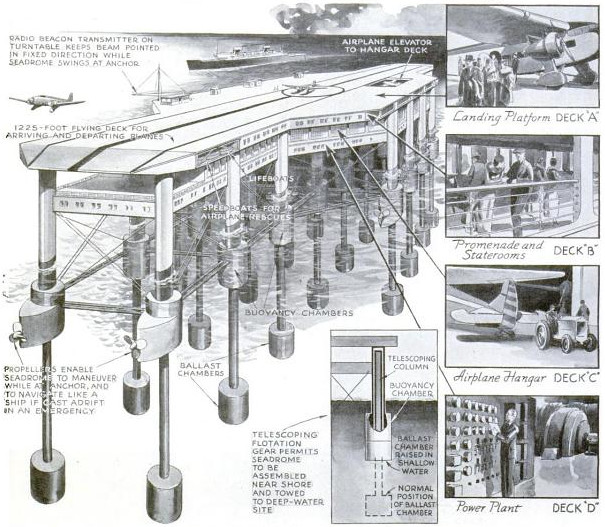
In 1927, before the advent of long-range aircraft, engineer Edward R. Armstrong proposed a unique way to get across the ocean: floating airports. Armstrong’s “seadromes” would stand above the waves on columns of steel, tethered to the ocean floor and stabilized with ballast tanks. Atop each would be a 1200-foot runway, a hotel, a restaurant, a hangar, and a fuel depot, effectively turning it into a stationary aircraft carrier. Armstrong hoped to string eight of these across the Atlantic so that short-range planes could hop between America and Europe.
He managed to interest the U.S. government in the scheme, and in 1934 Popular Science reported that lawyers had built a case for anchoring the stations on the high seas. But the Depression and the appearance of transatlantic aircraft finally crippled the plan, and Armstrong’s dream was never realized. The principle he proposed survives in floating oil rigs.
